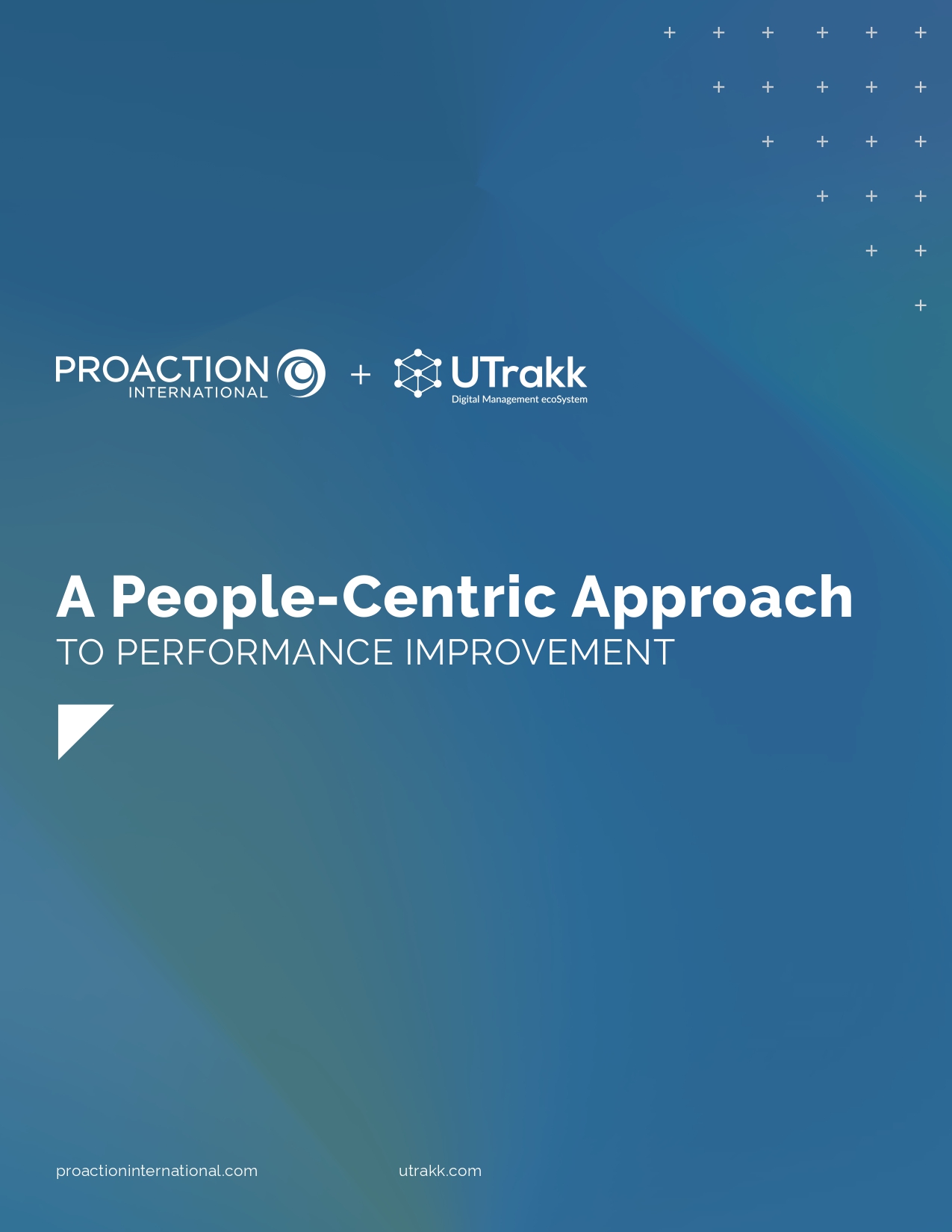What is employee disengagement?
Disengagement translates into a loss of motivation and involvement in the workforce. Actively disengaged employees are not emotionally attached to what they do or their organization. They stick to the bare minimum of their job description with no extra impetus or investment.
This phenomenon is known as “quiet quitting”. The vocabulary surrounding the subject flourishes: brown out (total disengagement), burn-out (professional exhaustion), bore out (generalized boredom at work), or big quit. These are reasons to give up one's job in one way or another because of unhappiness.
Causes of employee disengagement at work
Organizational causes
- Low or no recognition: Employees feel ignored or undervalued, which can seriously affect their self-esteem and willingness to invest.
- Lack of development prospects: An unclear future or stagnant situation dampens motivation and leads to an unambitious routine.
- Ineffective leadership: Authoritarian or distant management can create a climate of mistrust, destroying confidence within teams.
- Work overload: Excessive pressure exhausts workers, leading to chronic stress and increased mental fatigue.
- Poor internal communication: Unclear expectations or a lack of transparency in decision-making leads to employee frustration and misunderstanding.
- Lack of professional development opportunities: Employees who do not benefit from opportunities to acquire new skills tend to become less motivated.
Personal reasons
- Unshared vision: Employees who don't understand or share the company's objectives find it challenging to invest fully in it.
- Mental health problems: Anxiety, depression, or burnout can significantly reduce motivation and the ability to invest in work.
- Incompatibility with values: Employees who don't identify with the company culture or practices lose their commitment.
- Personal challenges: Financial, family, or personal health problems can distract employees and affect their performance.
- Negative company culture: A culture based on excessive competition, lack of respect, or toxic managerial practices contributes to mistrust and widespread dissatisfaction.
The cost of disengaged employees for companies
Employee disengagement brings significant costs to companies, both financially and in terms of overall performance.
Direct cost
In terms of sheer numbers, disengaged employees cost significant amounts to organizations each year.

- Gallup estimates low employee engagement costs the global economy US$8.9 trillion, or 9% of global GDP. (Gallup, State of the Global Workplace)
- The employee disengagement rate in the US and Canada is 51%, while only 33% say they are engaged. (Gallup, State of the Global Workplace)
- In the US and Canada, 49% of employees look at job offers or are actively looking for one. (Gallup, State of the Global Workplace)
- A single disengaged employee at the average salary level will cost almost $16,000 annually. (StaffCircle)
- For each employee lost, the cost to the company could be 50% for entry-level and 250% for leadership roles of their annual salary. (Frankli)
Indirect cost
In addition to the financial aspect, employee disengagement also has a negative impact on the entire organization.

- Lost productivity: Disengaged employees produce less and of lower quality, directly impacting business performance.
- High employee turnover: Dissatisfaction drives employees to seek opportunities elsewhere, resulting in high replacement costs.
- Negative company culture: A hostile atmosphere spreads, affecting engaged teams and weakening the organization's internal cohesion, creating a negative work environment.
- Challenging recruitment and employee retention: Employee disengagement creates a poor employer brand image. As a result, HR professionals may struggle to attract new employees and retain existing talent.
- Customer dissatisfaction: Poor customer service from under-invested workers damages customer relationships and experience, which can lead to a loss of loyalty and business opportunities.
- Increased sick leaves: Stress, low morale, and lack of motivation can lead to increased sick leave.
- Lack of competitiveness: Lack of commitment affects collaboration and innovation, hampering the company's competitiveness.
Detecting the early signs of disengagement
Identifying the early signs of employee disengagement is vital so you can intervene quickly and limit the negative consequences.
- Lost productivity: An actively disengaged employee generally delivers lower-quality work, lacks rigor, and takes longer to complete simple tasks.
- Lateness and absenteeism: Repeated lateness, unjustified absences, or increased sick leave can show a lack of motivation or satisfaction.
- Reduced collaboration: Disengaged employees participate less in meetings, avoid interaction with colleagues, and show little interest in team projects.
- Lack of initiative: A lack of new ideas, proposals, or efforts to surpass expectations may indicate disengagement.
- Negative behaviors: A cynical attitude, recurring complaints, or constant criticism of the organization or colleagues can also reflect growing disinterest.
6 strategies to improve employee engagement

1. Improve internal communication
Encourage open dialogue
Integrate interactive digital platforms like Slack or Microsoft Teams to foster fast, transparent communication. You can also set up anonymous chat rooms for employees to express themselves without fear.
Show transparency in decision-making
Organize quarterly sessions where management shares company results, upcoming projects, and strategic decisions while answering stakeholder questions. Informing and listening to them makes them feel taken into account.
2. Recognize performance
Set up recognition programs
Introduce a monthly recognition program highlighting outstanding performance to make employees feel valued. Colleagues can also participate by awarding badges or suggesting nominations for specific contributions.
Give regular feedback
Offer monthly reviews, including discussions on progress, aspirations, and challenges. Consider including informal feedback sessions such as weekly check-ins.
3. Encourage team spirit
Host internal hackathons
Organize internal competitions to solve concrete problems, stimulating both creativity and collaboration.
Implement mentoring programs
Match each newcomer with an experienced employee to facilitate integration and strengthen interpersonal bonds.
4. Improve well-being through working conditions
Structure remote work
Set up a clear framework for remote working, with defined objectives and regular connection times to avoid feelings of isolation.
Provide dedicated spaces for relaxation
Set up spaces on the premises to provide a soothing environment and enable employees to recharge their batteries (rest room, reading corner, etc.).
Focus on overall well-being
Support employees' health by offering wellness programs (physical activities, stress management workshops, access to psychological support services, etc.).
Give time and space
Avoid unnecessary meetings and overloading employees with superfluous tasks that only serve to fill schedules. Leave time slots free so everyone can concentrate on their priorities and develop their creativity.
5. Invest in professional development
Provide innovative training
Use modern formats such as micro-learning or virtual reality to make training more engaging and adapted to today's needs.
Offer personalized coaching
Provide customized coaching to help employees identify their strengths and areas for improvement.
Facilitate cross-functional projects
Allow employees to work temporarily in other departments to develop a global vision of the organization and new skills.
6. Measure engagement and prevent
Set up engagement dashboards
Use digital tools to track and measure team engagement, with indicators such as employee Net Promoter Score (eNPS).
Hold regular focus groups
Set quarterly focus groups where employees can collaboratively discuss their expectations and concerns with management.
The role of leaders in boosting employee engagement
Managers account for 70% of the variance in team employee engagement.
Gallup, State of the Global Workplace
If there's one major player in employee engagement, it's the leader. They directly influence the troops' work environment, motivation, and performance. Their actions and management style can create a positive and stimulating climate or generate frustration and disinterest. By valuing efforts, encouraging collaboration, and quickly detecting signs of employee disengagement, they help maintain and strengthen employee commitment.
Tips to become an engaging manager
- Practice agile management: Managers trained in Agile methodologies (sprints, retrospectives, Kanban boards) can organize work efficiently and respond quickly to change.
- Develop emotional intelligence: They must identify and understand their colleagues' emotions, particularly weakness (low energy, signs of stress), and react with tact and benevolence. Leaders create a supportive environment conducive to motivation and commitment by cultivating this ability.
- Strengthen participative leadership: Employees need to feel that they are taken into account. It's crucial to involve them in decision-making by consulting them regularly on projects or changes that concern them to nurture this sense of belonging.
- Inspire by example: Leaders must inspire their workforce by following the organization's values and principles. They communicate simply and honestly, act consistently with their words, and remain positive in facing challenges. Their attitude motivates workers to give their best and follow their example.
- Adopt a manager-coach style: The manager-coach supports employees in their personal and professional development, asking them the right questions rather than directly providing the answers. They encourage autonomy, promote decision-making, and help employees achieve their goals.
From prevention to action: Building a strong employee engagement culture
When organizations increase the number of engaged employees, they improve a host of organizational outcomes.
Gallup, State of the Global Workplace
Employee disengagement is not inevitable. While the cost of disengaged employees – both financial and human – may seem overwhelming, it’s nothing compared to the benefits of engaged teams. By implementing targeted, well-thought-out actions, listening to employees' needs, and instilling a rewarding company culture, it is possible to transform disengagement into an opportunity for renewal.
However, anticipating and preventing demobilization from the outset remains just as crucial. This involves well-targeted recruitment to align candidates' values with the company's, structured integration to facilitate ownership of missions, constant and transparent communication, and regular assessment of the working climate to act swiftly in the event of problems.
Finally, the role of leaders cannot be underestimated in this equation. Well-trained managers know not only how to motivate their teams but also how to create a stimulating working environment. Through appropriate leadership practices, they can detect signs of employee disengagement, guide their teams, and significantly improve job satisfaction.








